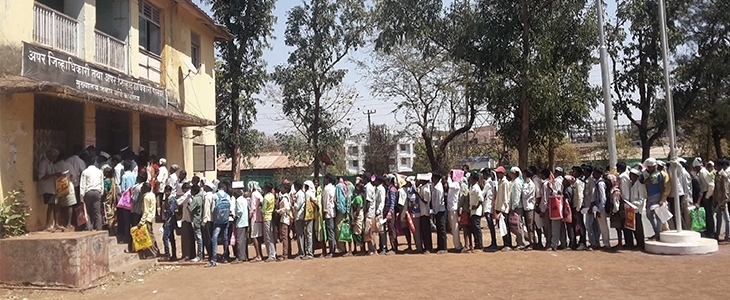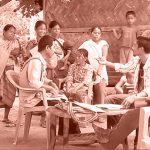
Bridging Gaps Between Citizens and the Bureaucracy – Part 2
7 July 2017
In the previous blog, I highlighted two of the common themes emerging from stories shared with you over the last two months:
- Digital illiteracy and access to internet facilities were keeping ordinary citizens from accessing vital information – ranging from filling up forms, making official changes to information that had been previously furnished to filing grievances.
- Weak grievance redress mechanisms.
In the face of these hurdles, these proactive citizens applied the following ‘hacks’ upon facing trouble in accessing public services or rightfully due benefits.
Hack #1: Directly contacting the MLA or other local politicians to get the job done.
This enabled a water-deprived community in Delhi to access water tankers (even though the water quality is poor and drinking water pipelines are still a distant dream).
Hack #2: Seeking the intervention of the employer or other privileged folks in the vicinity to share their internet password and their computer. An English-speaking, digitally literate person’s services were needed to help navigate government websites.
It got a girl admitted to a private school in Delhi under the Economically Weaker Section quota. In the unfortunate situation where the requisite resources were in short supply, like in the case of some families in rural MP who were trying to access/modify their Aadhaar information, middle-men arranged this at a fee.
Hack #3: Organising a protest.
In Bihar, when no one in the concerned department was paying attention to formal requests, aggrieved people gathered for a protest. The local administration took action thereafter when the individual’s formal complaints regarding not receiving full rations were taken lightly.
Hack #4: Filing RTI applications along with the original request.
There is an obvious caveat here. The applicant must first know how to file an RTI application. (Hacks 1 and 2 are applicable in this case as well!) Administrators are legally bound to move and respond to queries within 30 days. Simultaneously the original request seems also to get the attention it deserves; something that may have otherwise taken an indefinite amount of time owing to a generally weak commitment to the idea of time-bound service delivery in India. We saw this in action in Himachal Pradesh where a citizen, upon anticipating a public order issue, promptly filed RTI applications to get the right officials to address the matter before it exploded.
For a developing country like India which is marching down the good governance and e-governance path, it is not enough to simply create the policies and advertise using traditional means. The State must step in to create the demand for the same.
Moving towards long-term solutions
I must apologise in advance in case the readers found these unorthodox “solutions” unsatisfactory. The thing is that we shouldn’t be in a position where we have to resort to short-cuts or round about ways to access basic services! It belies the whole point of “efficient” service delivery and only increases a sense of mistrust and cynicism towards civic bodies. But unfortunately, this is the status quo even in this day and age of e-governance.
The administration on its part, in tandem with political players, is moving in the right direction, albeit slowly. For instance, in the case of admissions under the Economically Weaker Section quota in Delhi, the State Government has made headway by heavily advertising about the quota and admission process in the last two years, volunteer booths were set up to help families fill up admission forms across Delhi, there is a detailed FAQ about EWS admissions on the Education Department’s website in Hindi and English. A video in Hindi explaining how to fill the admission form step by step exists, and parts of the admission form itself are in Hindi. What stopped those involved from fully translating the form in Hindi is still a mystery, but the larger point is that we can see progress.
While resolving the twin challenges of improving access to IT resources and spreading digital literacy will require several more years, there are some things that the State can do in the medium to short term to bridge the last mile access gap. For a developing country like India which is marching down the good governance and e-governance path, it is not enough to simply create the policies and advertise using traditional means. The State must step in to create the demand for the same.
One way to do this could be by setting up internet kiosks for the public to freely access information or apply to avail various public services. Text on websites should be readable in regional languages. Short, informative videos can be put up on websites that communicate the same information as text, for wider reach. Governments should crack down on ‘technical middle men’ who are exploiting the gap in demand and supply. Finally, audits should be conducted to assess the efficiency of user-friendly government websites, and the efficiency of existing department-level grievance redress mechanisms.
In the meanwhile, it is incumbent on us as the citizens of this country to seek out public officials and discuss possibilities of deepening and re-imagining our modes of engaging with the system.
The views shared belong to individual faculty and researchers and do not represent an institutional stance on the issue.





